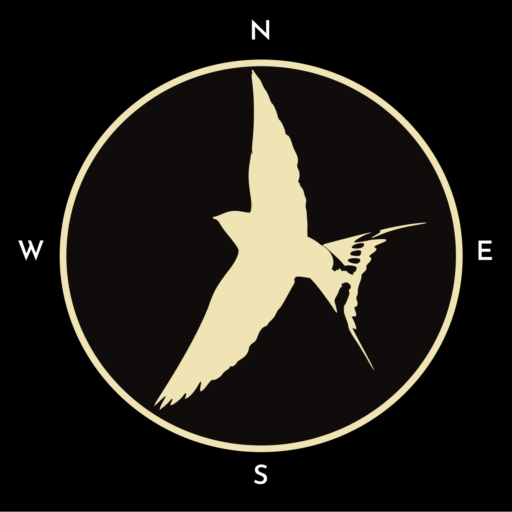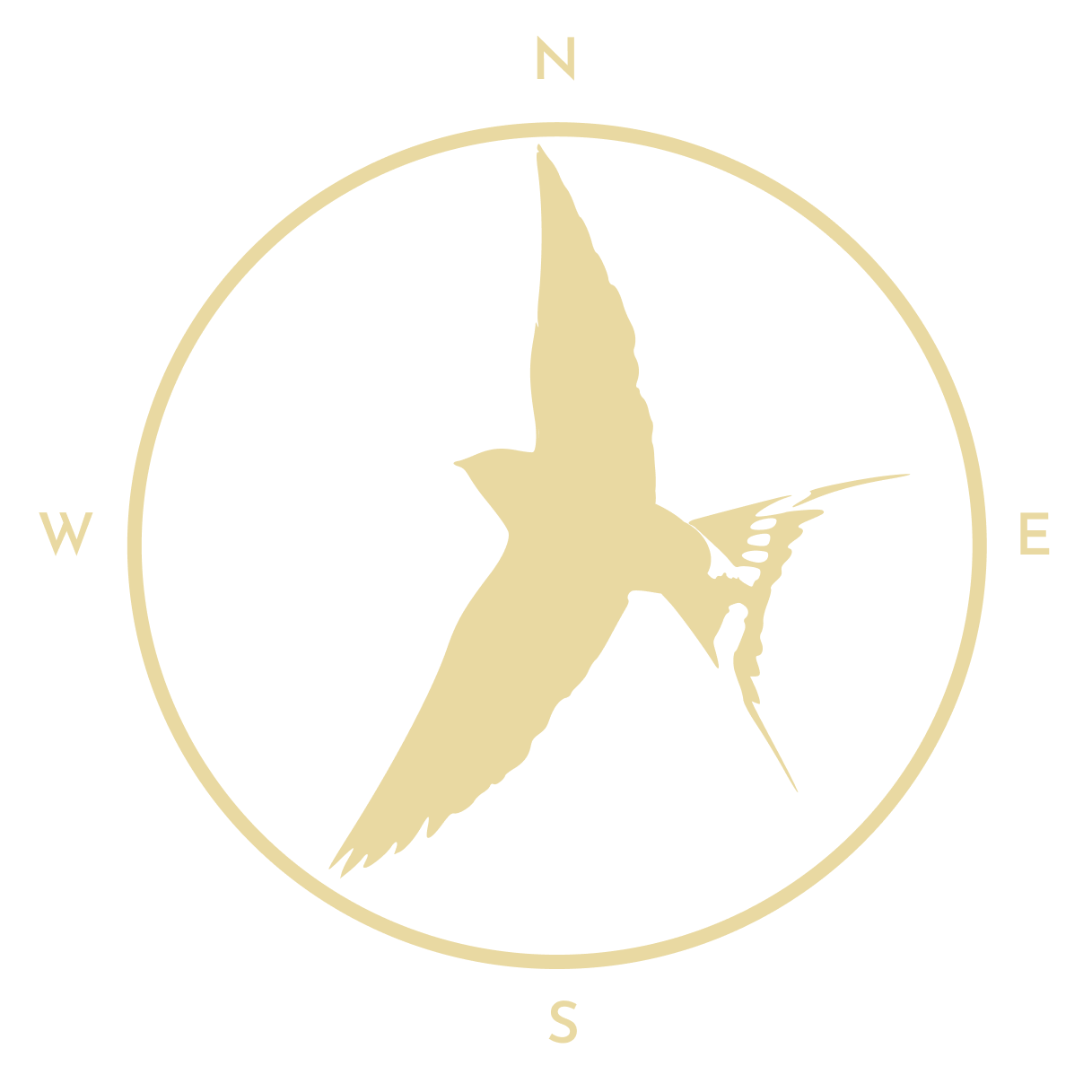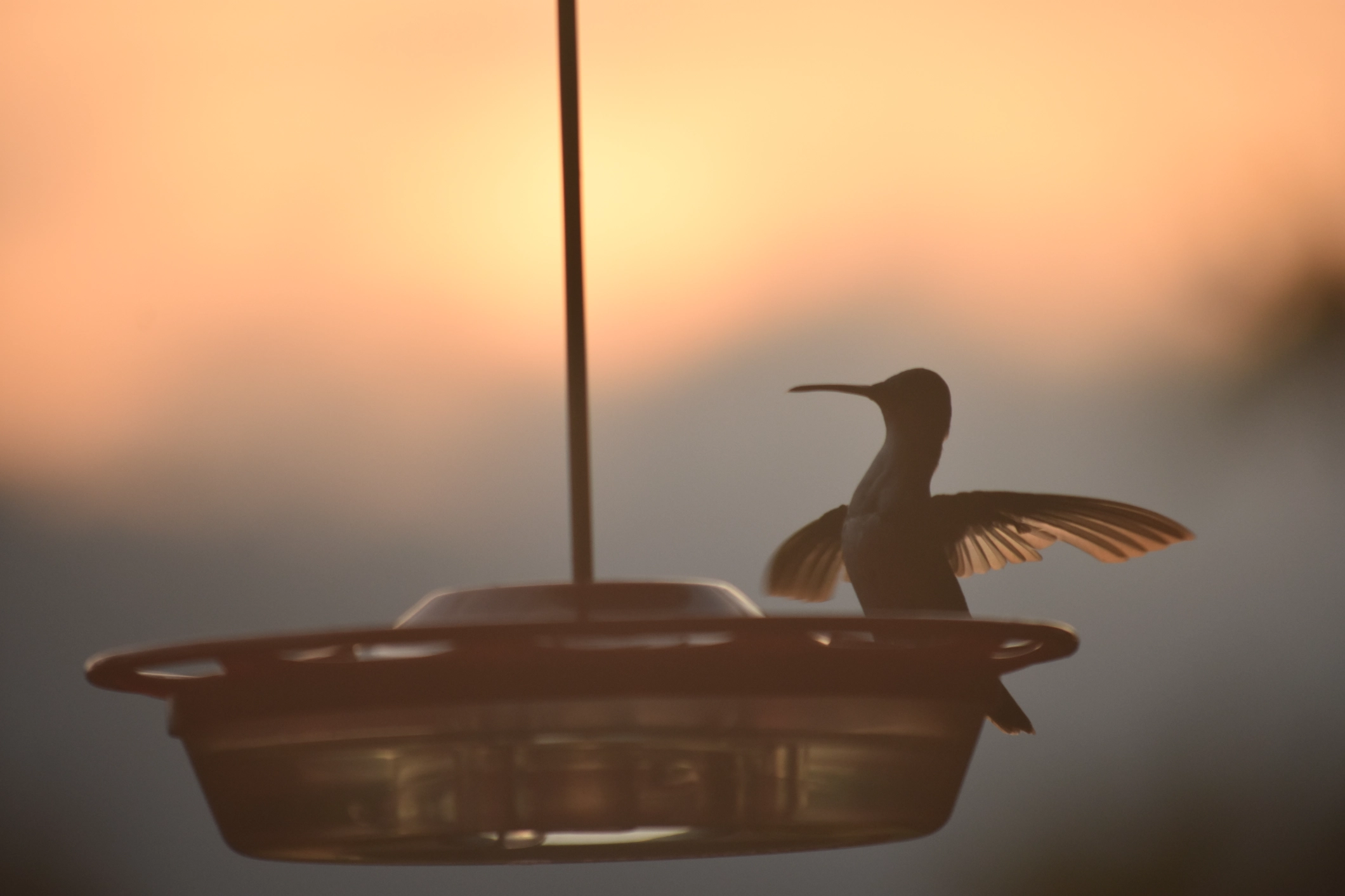Paz de las Aves: Ecuador’s best bird site on a budget
I was initially going to write about Paz de las Aves reserve as part of the Mindo guide, but as I wrote everything you see down below, I quickly realised that would not do the place justice.
If you haven’t heard of Paz de las Aves, it’s quite possibly the most famous bird reserve in Ecuador. Birders simply do not visit the cloud forest region without dropping by one fine morning, and when they do their reaction is one “wow” after another. These guys have a practical monopoly on certain birds, given that a visit there yields three species that would be nigh on impossible otherwise; ocellated tapaculo (I’ll explain later), giant antpitta (a football on legs) and dark-backed wood-quail. All are quite accustomed to people given that the owners put out worms or bananas for them, call them over by playing sound recordings or quite literally their name (no porkies) and have them feed right in front of however many tourists are visiting that day, no blinds or anything of the sort needed. If that wasn’t enough, the same trick gets pulled with three other antpitta species.


Many visits follow the same script. You kick things off by getting to a bend in the road at 5AM and head down a trail that leads to a blind. This blind overlooks a clearing where male Andean cocks-of-the-rock put on a show. They attempt to attract mates with a crest that goes around their head down to their beak, and with a cacophony and show of head-bobbing that lasts for half an hour each morning. And that’s just if a female doesn’t turn up – if one does then to call the performing chicos zealous would be an understatement. Whichever one of the family that owns the property is with you that day will then tell you to turn around; from the bushes behind the blind, the wood quail emerges to get its daily dose of bananas.
You drive on to a bridge where the owner gets out of their car to take a look underneath; sometimes there is a nightjar sleeping down there. If not, it should be on the cliffs nearby, though neither I nor anyone else was able to spot it. We could have been staring at it for all we knew, though. You walk a bit further up the road to the spot where Maria the giant antpitta gets fed – almost every photo of this species is of her alone. The story goes, Angel (the eldest member of the family) encountered her one day and gained her trust by feeding her worms. He did not realise at first that he had basically tamed a bird visitors struggle like mad with elsewhere, and the first time he showed her the guests were, to him inexplicably, astonished. Now, she responds to him calling “Maria, venga, venga!” (come on, come on) into the bushes and has practically become what placed the reserve on the map.
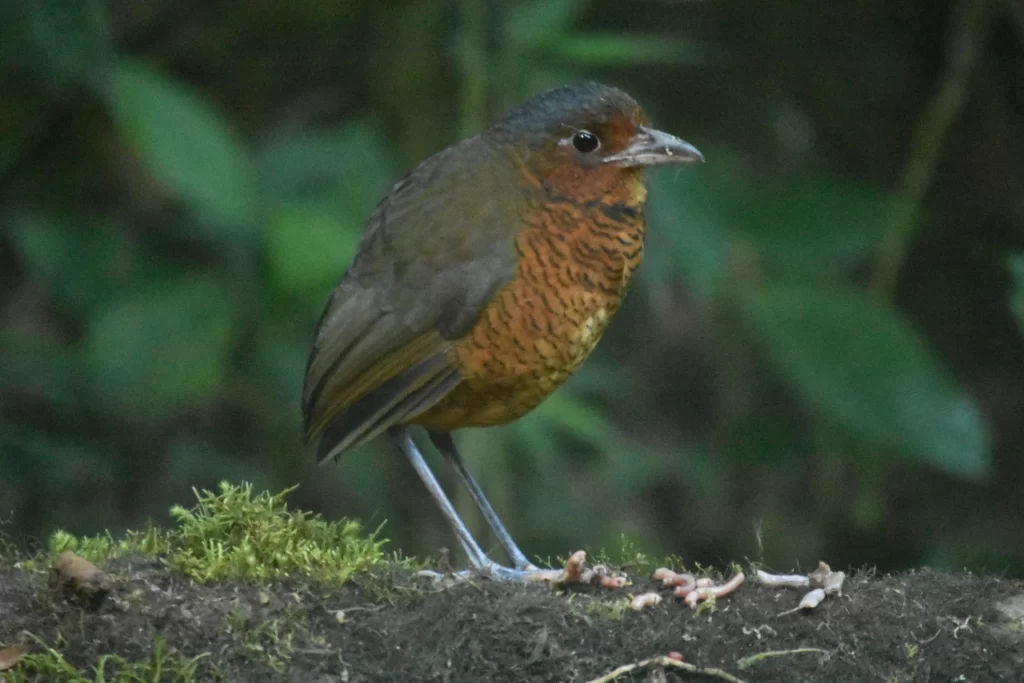

After this, you have the option of being shown the tapaculo, in exchange for sacrificing some (but not all) of the other antpittas. Driving up into the hills, you get taken to a trail where, at the start, they call out the antpittas. Continuing along the trail to the tapaculo site is a twenty-minute walk over some rough terrain, so come prepared with boots. They’ve only recently started to feed this one so much more patience and standing still while they slowly reel one in is needed.
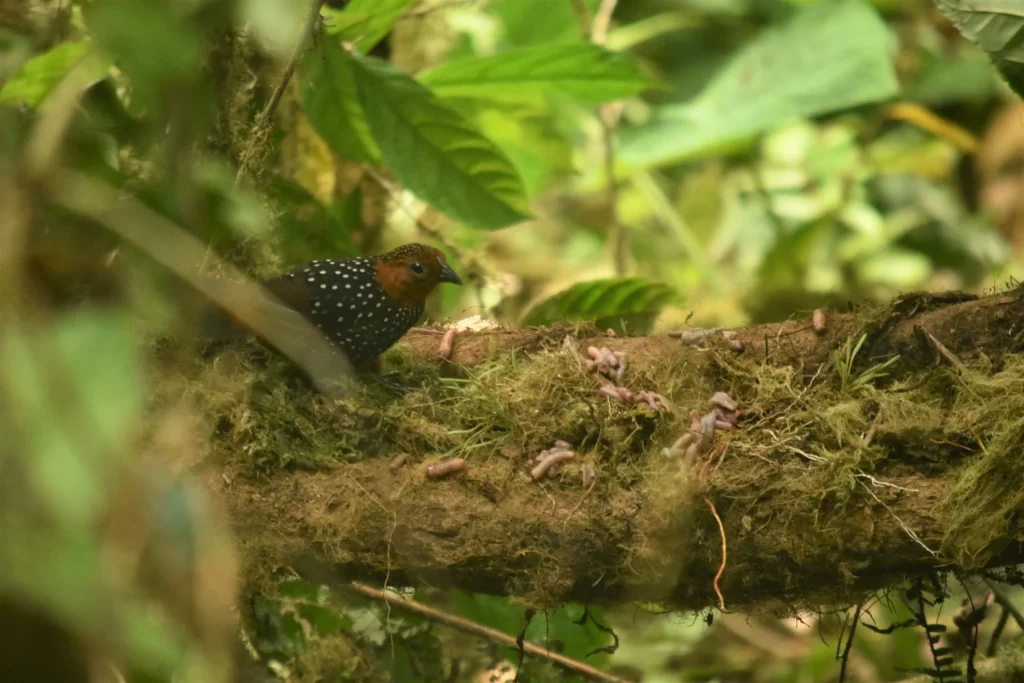

Once they locate one by its call they get things ready. Angel puts out the worms and his son sets up the tripod, concealed behind some leaves. I’m not actually sure why, it’s not like the humans using it are obscured at all. We all wait, Angel keeps playing a recording of its call and throwing a mix of worms and stones into the bushes so that the sound of small things hitting the ground draws it ever closer. He continues this as a few minutes pass between calls, each one getting louder, until a pigeon-size figure rustles through the bushes and hops into plain sight. It doesn’t sit around like the other two of the Trinity, preferring to instead hop into the open for twenty good seconds then retreating to the bushes for five minutes – then coming out for another ten, and after this we decide we’ve done well enough for today.
If that wasn’t enough, the reserve is itself a fantastic place to do birding the conventional way. We also managed to spot one species of quetzal and a mountain toucan on the tapaculo trek, and I got some fantastically close shots of another quetzal wandering around the reserve. There was also a pair of trogons, another species that had until this point eluded me, hanging around the antpitta site, and dippers in the stream.
And, if that wasn’t enough: there’s a type of moment in birding everyone who’s built up a list of the species they’ve seen that day or during their life will have experienced, usually in the tropics. Effectively, it happens when there are so many new ones in one place that one is rushing to get them all observed, identified, photographed, listed, appreciated, etc, lest any fly away before you clap eyes on them. I call it “freebirding”, since the overall pace at which this activity is carried out feels like the second half of the Lynyrd Skynyrd song, but that’s just my personal term.
Anyway, the spot where breakfast is served and where the feeders are is where I have had, to date, my most intense freebirding session ever. Hummingbirds of various colours swarm behind the tables, covering the branches like a Christmas tree and one at a time swiftly raiding the nectar feeders then heading back to the tree to enjoy their plunder. Especially unique is the booted racket-tail with its evolutionary two-in-one of having feathered feet and… well, a racket tail. Every now and then a huge sylph barges in with its ribbon-like tail, twice the length of its body.
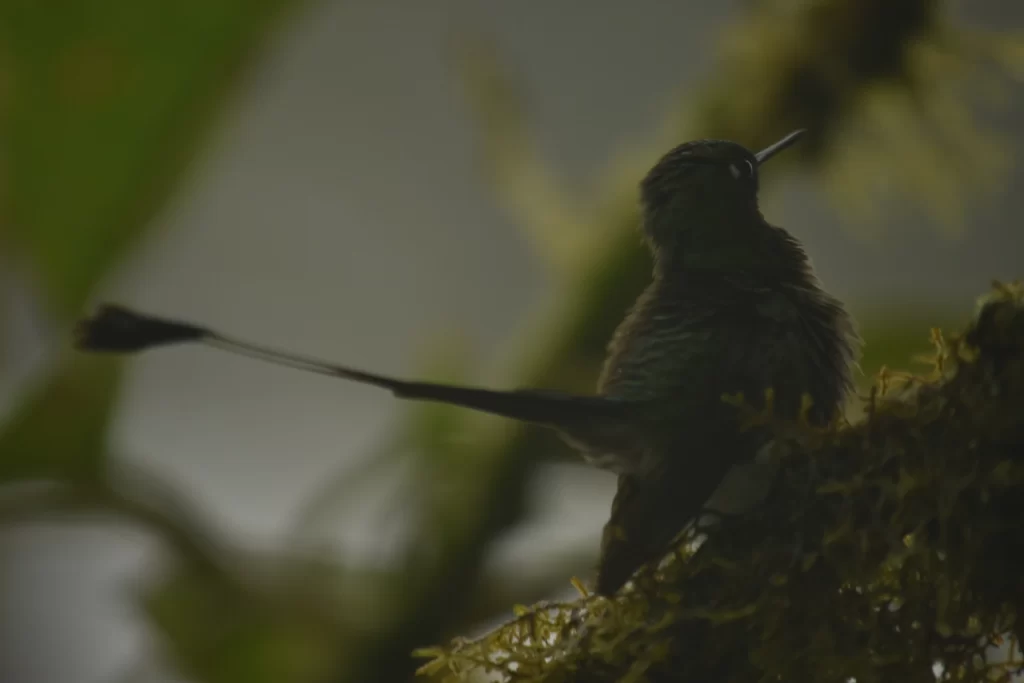

After all this action I snapped my attention back to the front where, amidst trying to take note of all the tanager species present, a toucanet flew into plain sight and was joined by another – then, by a toucan barbet. With that, I had practically ticked off everything on my most-wanted list, and then some, and the “then some” part showed no signs of slowing. All this was over what had to be the best breakfast I’d had in Ecuador, and with all this action the coffee certainly went down a treat!


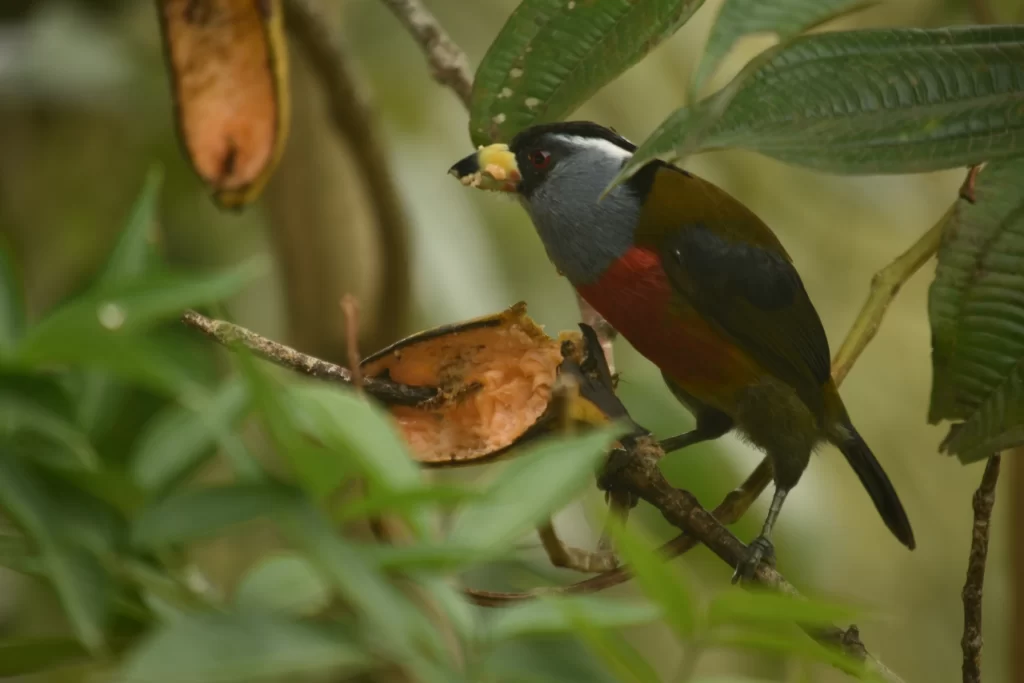

How to do it
Give them a phone call to confirm that whatever date you have in mind is OK, and bring along enough cash to pay your way on the day. The morning tour, aka the Odyssey I’ve just spent the better part of five minutes describing, runs for $30 including breakfast, with seeing the tapaculo an extra $10. If you miss something you can come back again, to only see whatever it is should be $10.
Paz de las Aves is half an hour east of Mindo and best accessed by one of the truck taxis in town. A round trip here should run for $25, but if you’re doing the full morning tour things are a tad more… complicated. I’d assumed the bird sites were within walking distance so had arranged with the driver to take me there, go back to Mindo to keep working for a few hours then come back for me, and lo and behold the sites were not. So, it would appear you also need a taxi or car to get you around the reserve for the next five hours, which is of course an extra cost. What that extra cost is can range from $15-$25. I saw a lot of guests riding around in sedans, but I also saw some roads (especially on the way to the tapaculo site) that would have been impassable. Anyway, to get back on track, I kind of fluffed up this part since I’d only arranged a ride there and back again, but one of the guides was gracious enough to let me ride around in his car. It’s probably not the “done” thing to turn up and expect this to be an option, so for politeness sake I’d call ahead and ask if this would be okay. You’re dealing directly with the owners so they should be fairly flexible. As a side note, it looks a tad strange to be preserving the forests yet also encouraging additional air pollution…
They do have accommodation though it’s dead expensive, so it’s better to do this as a day trip. If you need to make a phone call get them to do it, since their phone seems to be the only one with signal in this part of the hills.

